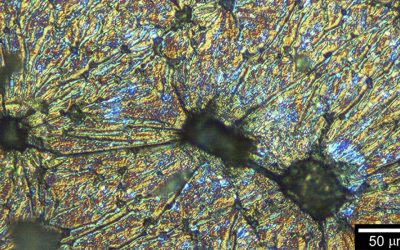 Gradient copolymers are a unique type of heterogeneous designer polymers with a continuous compositional drift from one chain end to the other. This distinctive architecture results in polymers with properties unavailable to homopolymers and traditional copolymers including unusual interfacial phase behavior, increased critical micelle concentrations, reeling-in micelle effects, and broadened glass transition temperatures. These rare properties suggested the use of gradient copolymers as polymer blend compatibilizers, additives for sound and vibration dampening, and stabilizers for emulsions.
Gradient copolymers are a unique type of heterogeneous designer polymers with a continuous compositional drift from one chain end to the other. This distinctive architecture results in polymers with properties unavailable to homopolymers and traditional copolymers including unusual interfacial phase behavior, increased critical micelle concentrations, reeling-in micelle effects, and broadened glass transition temperatures. These rare properties suggested the use of gradient copolymers as polymer blend compatibilizers, additives for sound and vibration dampening, and stabilizers for emulsions.
The degree to which the properties occur may be tuned by the specific composition of monomers and quality of gradient composition. Recently reported computational studies indicated that copolymers with broad molecular weight distributions (MWD) are characterized by poor gradient quality. However, gradient copolymers are notoriously difficult to characterize experimentally as most techniques provide an average gradient value for all chains in the system.
In this work by Krzysztof Matyjaszewski et al. atomic force microscopy was used to image and characterize the gradient composition in single molecular bottlebrushes. This molecular imaging allowed for not only the average gradient composition but also to analyze the distribution of composition between individual macromolecules. It has been shown that deviation from the average composition increases with broadening of MWD. These experimental results suggested using MWD values as a correct trait to assess gradient quality, thereby establishing an additional, and much needed, method of characterization of gradient copolymers.

















